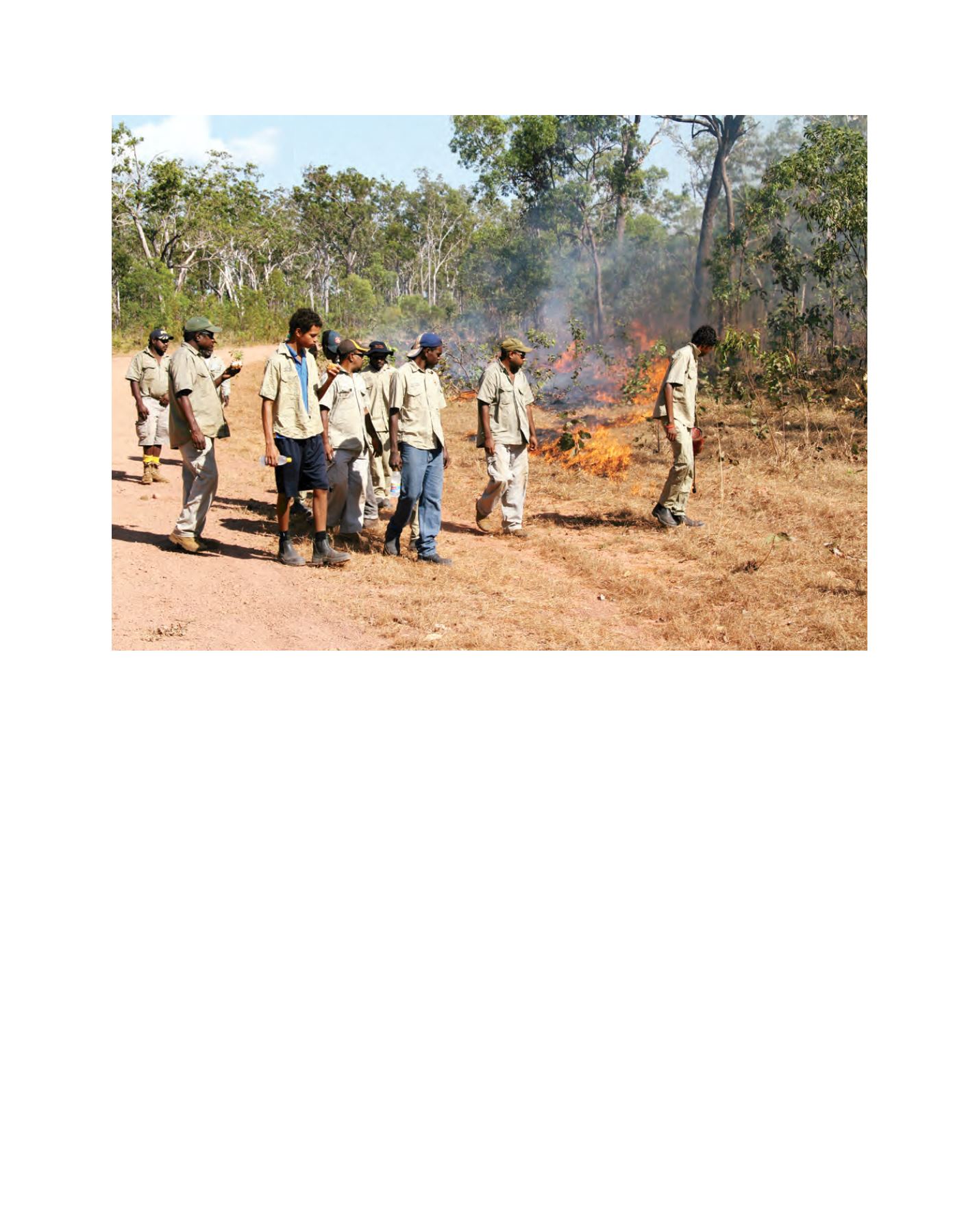

[
] 232
savanna woodlands of northern Australia.
11
Largely
unmanaged wildfires in tropical savanna woodlands
and open forests release into the atmosphere large
quantities of the greenhouse gases methane and
nitrous oxide, contributing on average 3 per cent of
Australia’s greenhouse gas emissions.
12
Australia’s forests are also unique because three quar-
ters of forest reserves are on public lands. The political
and legal construction of forests as ‘publicly’ owned
goods has been a source of indigenous dispossession
in Australia and internationally.
13
As such, forests have
become an important focus of environmental disputes
in Australia, and the question of forest use and manage-
ment has become a major national political issue.
14
This ongoing and complex social and political rela-
tionship between Indigenous peoples, other resource
users and the State continues and sets the important
cross-cultural context in which new initiatives, such as
community-based forestry and indigenous co-manage-
ment agreements, have been created.
15
Co-management agreements negotiated in Cape
York, Kakadu National Park and elsewhere have also
opened up important opportunities to address some
of the problematic issues that plague indigenous rela-
tionships with the State over forest management and
ties have supported the conservation of a range of flora and fauna.
5
Indigenous peoples also use fire for subsistence, social and cultural
purposes such as burning to protect particular sacred sites, as part
of traditional hunting techniques, to travel through terrain, and to
‘imprint a human signature’ on certain landscapes and places.
6
Customary indigenous burning practices and cultural relation-
ships to forest ecosystems have changed since European colonization
and the introduction of new plants and animals. Indigenous peoples
in central Arnhem Land, for example, report on adapting fire
regimes to create patches of grasslands to attract feral Asian water
buffalo as a highly valued food source.
7
Some Indigenous peoples
have maintained cultural connections to forests as employees in
the commercial forestry sector.
8
In many cases the relationships
Indigenous peoples have with forests have been lost due to signifi-
cant levels of dispossession of lands and the rapid loss of forest
ecosystems through land clearing for agriculture.
9
Successive Government policies dedicated to promoting
European colonization and the interests of settler land uses
prohibited indigenous fire burning practices in many parts of
Australia, depopulated vast areas of land, and created new forest
ecosystems.
10
This has had a significant impact on the ecological
and cultural attributes of forest landscapes, including the expan-
sion of rainforest patches in the wet eucalypt forests of Northern
Queensland, the contraction of conifers in the southern state
of Tasmania, and the expansion of flammable grasslands in the
Tiwi land management rangers teaching Tiwi College students how to light experimental fires as part of the Tiwi Carbon Study
Image: Adam Liedloff
















